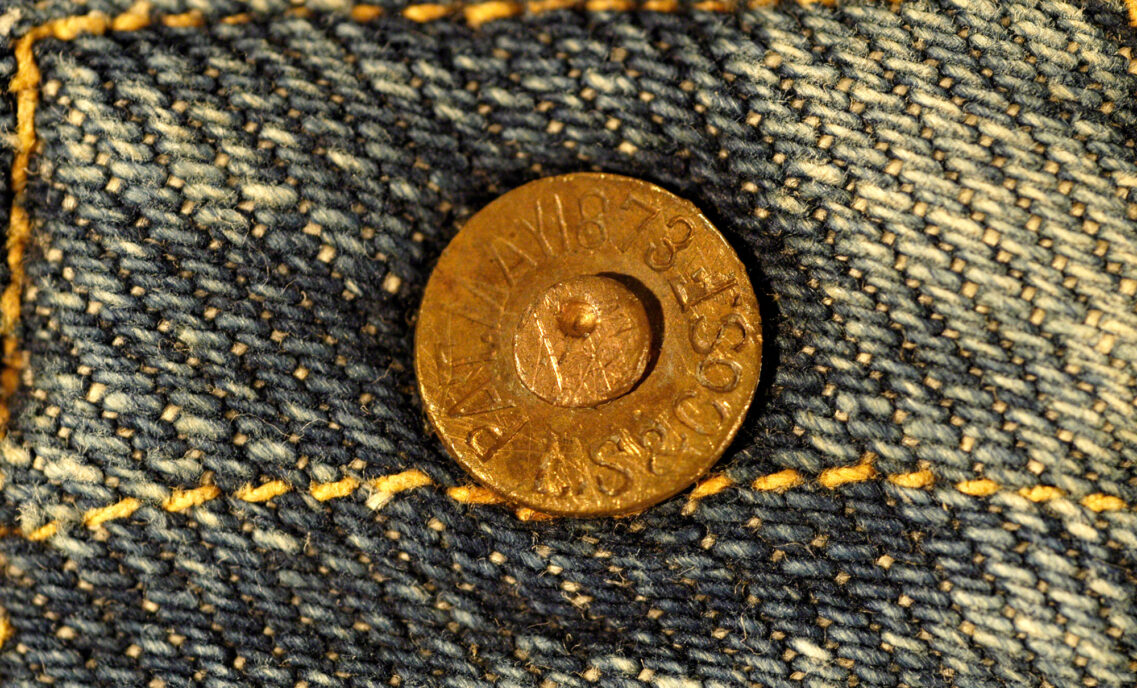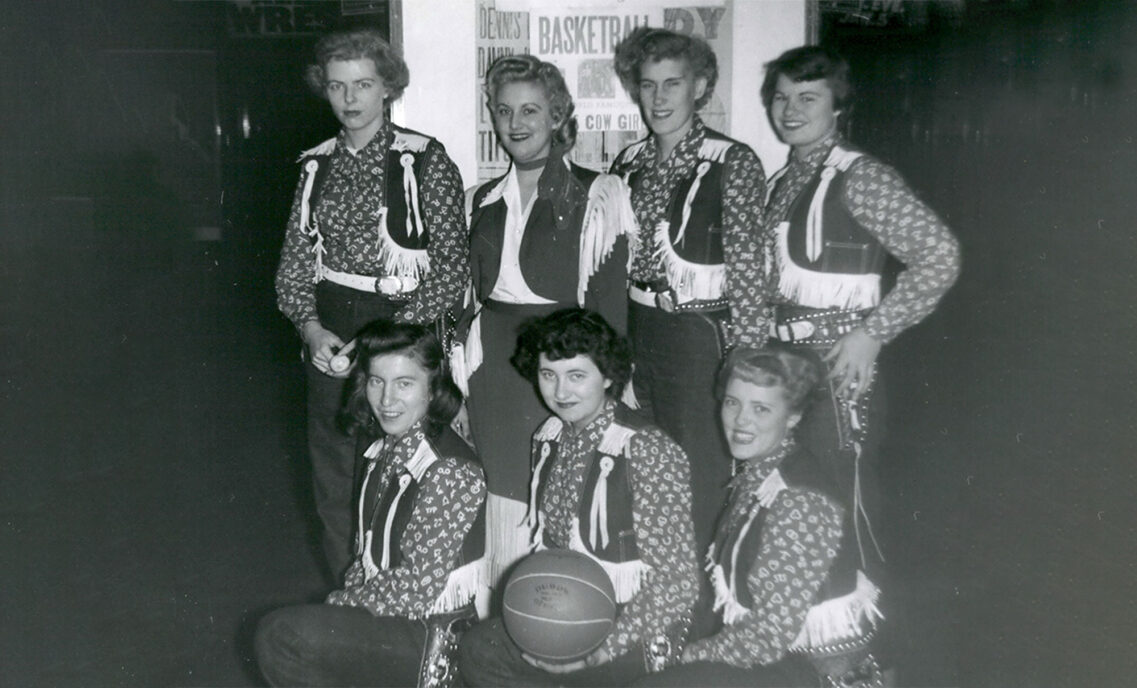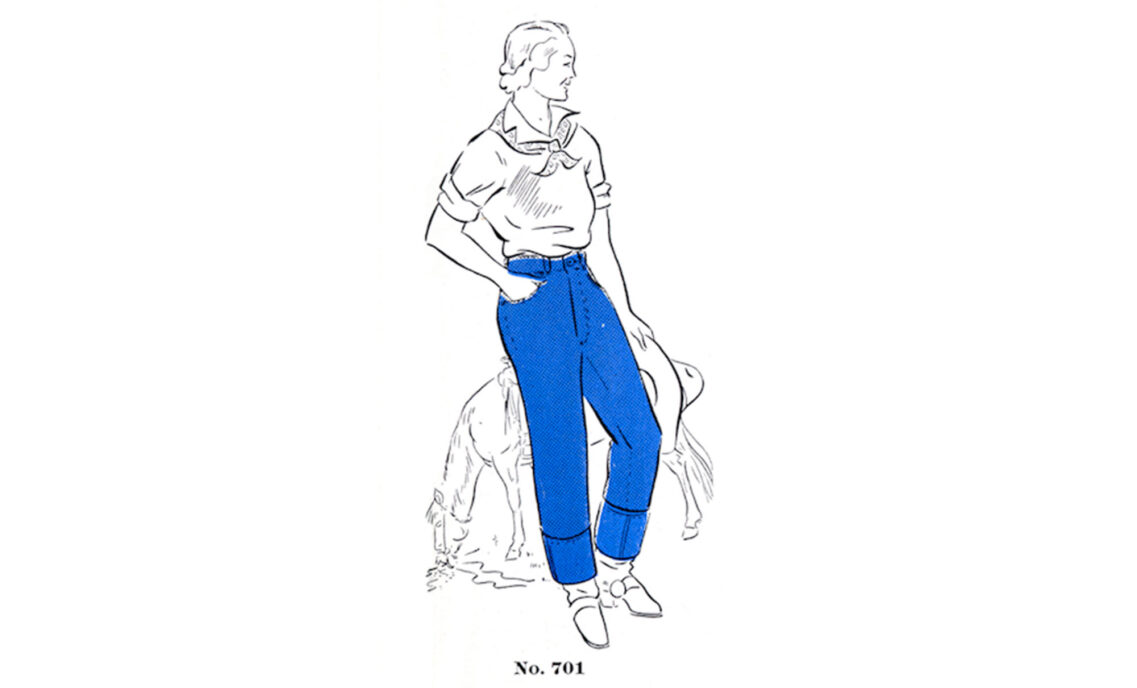Our Fab Favorites asks LS&Co. insiders for the low-down on their top picks from the Levi Strauss & Co. Archives.
I met up with Janine Chilton-Faust, who leads Men’s Bottoms Design, to walk us through her favorite Levi’s® garment. Janine chose a 501® from her home state of Colorado that dates back to the World War II era.
During the 1940s, Levi Strauss & Co. made changes to its copper riveted overalls to conform to rules set by the War Production Board for the conservation of raw materials. The crotch rivet, rivets on the watch pocket (small front pocket) and back cinch were all removed to save fabric and metal. The Arcuate stitching design was also removed as the thread was decorative only and did not have a function on the garment.
Concerned that selling the overalls without the Arcuate stitching would confuse consumers, LS&Co. arranged for sewing machine operators (or other employees, we really don’t know) to paint the stitching on each pair. A special pocket flasher (redesigned into the shape that is still used today) was used during the war, calling out the painted Arcuate and saying that it would only be painted “For The Duration.”
Janine’s favorite pick, the Commodore 501® from 1944, is a pair of riveted overalls from the Commodore Mine in Colorado that was manufactured during the war with those wartime unique elements. The painted Arcuate has been rubbed off, which leaves the pocket free of any design, and the only rivets on the pants are on the large front and back pockets.
Following the war, the rivets on the small watch pocket returned as well as the Arcuate pocket stitching. Other wartime changes, like the loss of a cinch, became permanent features of the 501® jean.
Aside from these changes, the most unusual element of the Commodore is a v-shaped shadow on the front and back side of the pants near the crotch. It outlines the area where leather chaps once covered the jeans.
Listen to Janine discuss her favorite details of our Commodore 501®, from the color and wear marks, to its classic fit.







